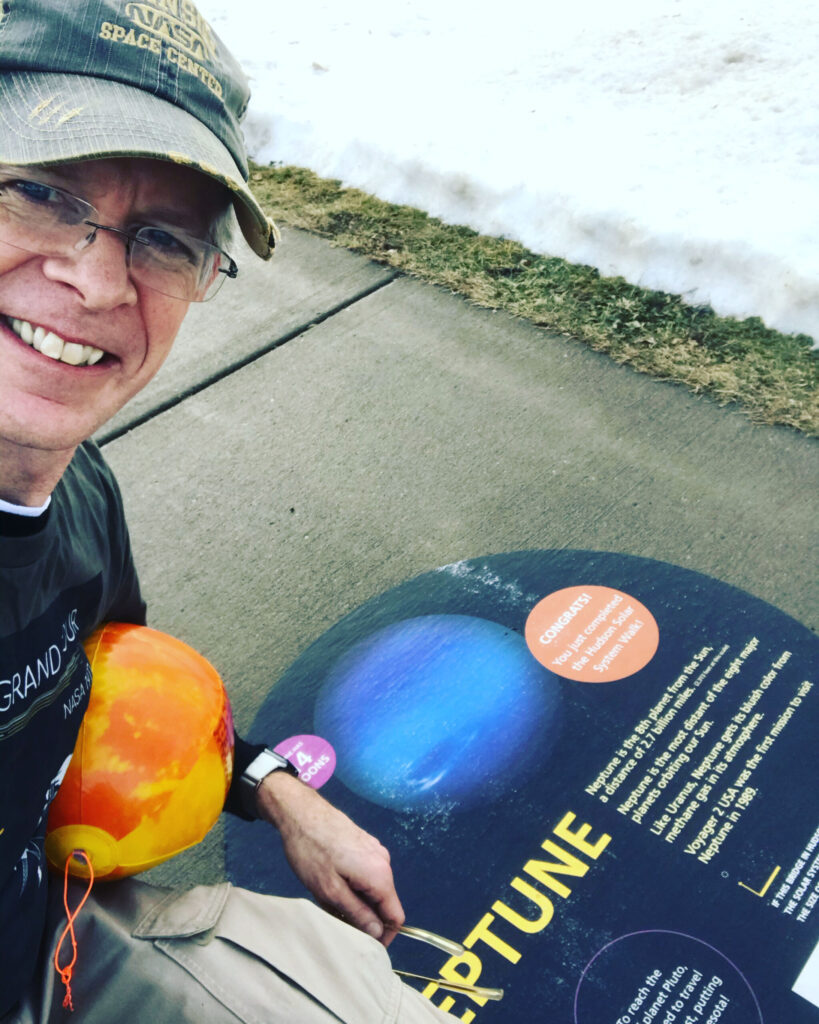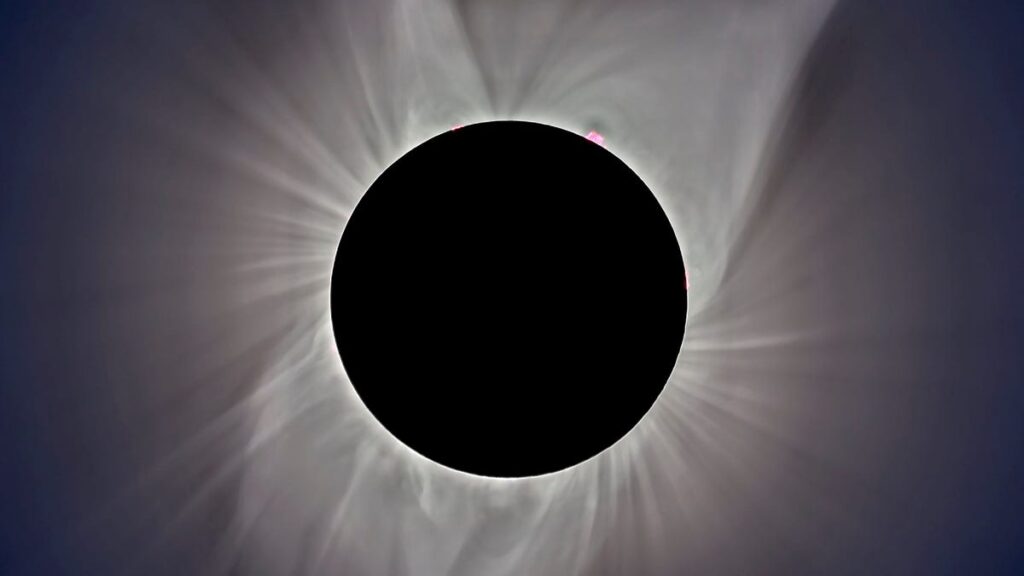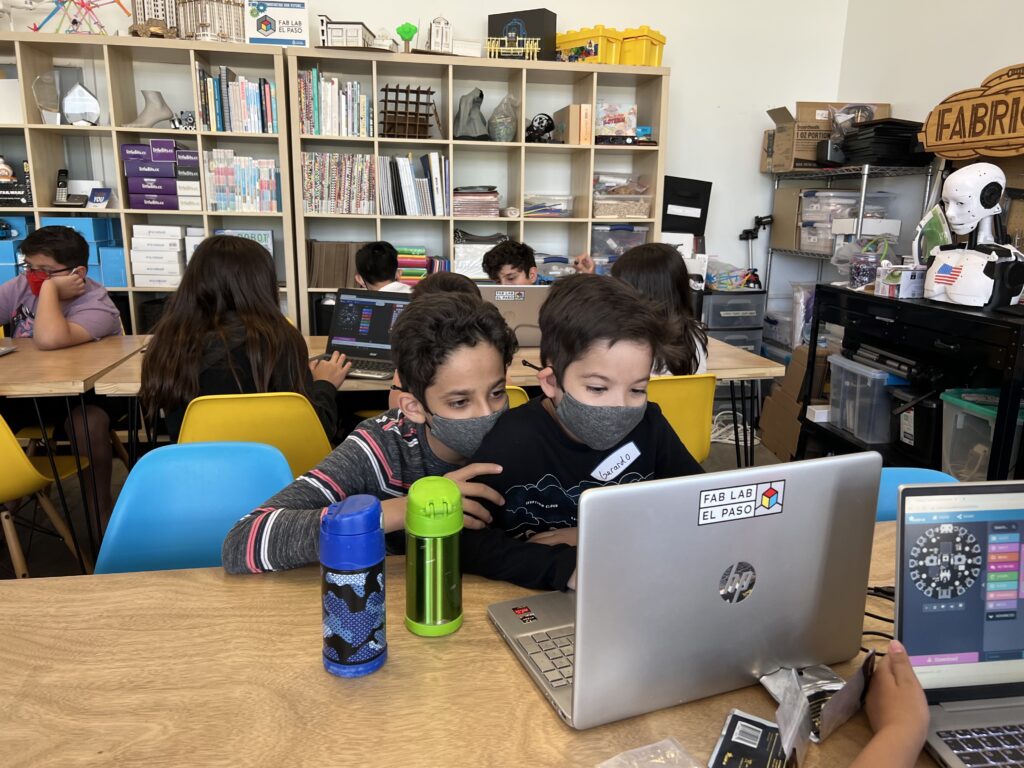Summer is For Solar Systems

The vast size of our Solar System can be a hard concept to get across to visitors at your library. Luckily there are several fun and interactive ways to represent the scale of our Solar System for multiple age groups, indoor and outdoor, from a strip of paper to a mile-long walking tour beginning at your library! Are you ready for some Solar System Fun?
https://nightsky.jpl.nasa.gov/download-view.cfm?Doc_ID=392
The hyperlink above will give you all the information you need to do a “Pocket Solar System” that participants can decorate as they learn about the distances of the planets from each other and the Sun. Any paper you have handy can be adapted to work. I have had access to register rolls of paper before (the type used for printing receipts at a cash register) and that is a great size, toilet paper rolls will also work well. That kind of width and length of paper is helpful.
After all the planets are placed at the correct distances, encourage your participants to add comets, asteroids and spacecraft.
I will work in discussions of some of the robotic missions that have visited different planets in our Solar System over the years. I usually hang print outs of some of the missions around the activity room (Voyager, Viking, New Horizons, Cassini, etc.) For finding information on a particular mission, finding images to print or add to a slide show, go to: https://solarsystem.nasa.gov/missions/?order=launch_date+desc&per_page=50&page=0&search=&fs=&fc=&ft=&dp=&category=
For those that have access to a larger space for an indoor activity (between 50 to 90 feet, depending on what type of toilet paper roll you use – see the link for more information) https://astrosociety.org/file_download/inline/cfdf9b2c-5947-4c19-9a23-a790ac3c7ae0
This model of the Solar System is a larger scale model of the earlier Pocket Solar System we looked at. This one requires 1 entire roll of toilet paper per participant or team. I usually have 2 participants work together to create their Solar System, but sometimes everyone wants to take one home at the end, so in that case I still have them work in teams of 2, but I give them 2 rolls, and they each help each other complete both rolls. Depending on the access to a large area for this activity, you may need to consider capping participants to a certain #. I only have room for about 10 participants and 5 rolls of toilet paper being all rolled out across the floor at any one time. I offer the program twice back to back on the day of the activity, so I can accommodate up to 20 participants each time I run it.
And then to make a larger scale model in a backyard, park or sidewalk tour through your neighborhood with chalk, this site can help you calculate the size of the project that best suits your needs/community. https://www.jpl.nasa.gov/edu/learn/project/make-a-scale-solar-system/
I hope you enjoy tackling whatever Solar System project you and your library are up for. There are many variations on these projects, such as using yard signs to mark the distances of the planets (for use on grass areas along sidewalks or in a large park) or making use of sidewalk adhesive graphics (as pictured at the top of this blog). I was able to get a local graphic design firm to donate their graphics work, and a local printer to provide a nonprofit rate for the production of the graphics.
Have fun, be creative, and please share your results in the comments below. I am always looking for inspiration on a new way to engage patrons with our amazing Solar System. This is a great project to have a great involvement of the “A” in STEAM. Sidewalk chalk to patrons to add stars, asteroids, comets, robotic spacecraft, space telescopes and even distant galaxies on the sidewalks being used for a Solar System walk. Crayon, colored pencils or markers on the the register tape or toilet paper roll versions of the model. These are great ways to personalize the Solar System projects, and to show how they see our Solar System.






Creating a mini solar system is a lot of fun! I did the activity with string the year Voyager I crossed into interstellar space. I assigned various people to represent each planet, the asteroid belt, Pluto, and the Voyagers. They wore smocks that identified themselves. I encouraged the group to space the ‘objects’ as the group thought they should be, then we measured and placed everyone accurately. Participants were amazed by how far apart objects in space are.